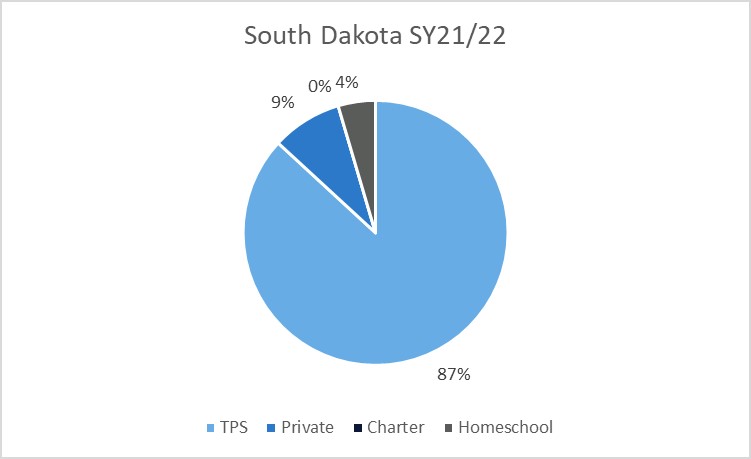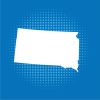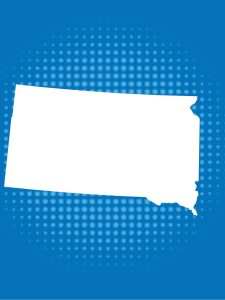South Dakota is one of three states (along with Oklahoma and New Mexico) with the highest percentage of Native American residents. These states also all have the country's most extended compulsory education age requirements — requiring between twelve and thirteen years.
History
In the midwestern United States, South Dakota legalized homeschooling, or “alternative instruction,” in 1939, followed by several updates.
Regulation
South Dakota requires parents who elect to homeschool their children, ages 6 to 18, to notify their local school or the Department of Education through an online submission or by completing the paper form.
The state does not require but strongly recommends maintaining attendance records. Alternative instruction (homeschool) students must receive instruction in at least math and English. The local school district is required to loan textbooks to homeschool families upon request. Instruction administered in English is not required, but the aim of teaching should be “mastery of the English language.” There are no minimum education requirements for parents or assessment requirements for homeschooled students.
Homeschooled students may enroll in public school courses and other activities part-time. Access to public school offerings for other nonpublic students is limited. According to South Dakota policy, homeschooled students with special needs are not eligible for special services unless enrolled in the local public school part-time.
State Data
South Dakota collects and publicly reports annual homeschool participation information. Over the last two decades, South Dakota experienced steady growth in homeschooling participation. For example, just over 2,000 students reported homeschooling in 2000 which increased to over 6,600 at the height of the pandemic and continues to increase.

U.S. Census estimates indicate that around 6.5% of South Dakota families homeschooled in the spring of 2020 and increased to 12.5% by the fall of 2020. Note that these percentages reflect family participation. Student participation would be higher, given that many families have more than one child. Later U.S. Census estimates indicate that, in the 2022 and 2023 school years, an average of 4.2% of all K-12 students in South Dakota were homeschooled.
Cross-Sector Comparison
During the 2019-20 academic year, 3.4% of South Dakota’s K-12 students were homeschooled. Homeschool participation in the state was about half the 7% of private school students. There were no charter schools in South Dakota. During the 2021-22 academic year, 4.6% of South Dakota’s K-12 students were homeschooled, and 8.6% of students attended private schools.

School Choice Context
In addition to homeschooling, parents in South Dakota have limited educational choices. These options include open enrollment in traditional public schools and one private school choice tax credit program, but it does not serve homeschool families. There are no magnet or charter schools in South Dakota.
Commentary
South Dakota could publicly report more of the information it collects from homeschool families to improve transparency and to help offer more insight into understanding participation trends in the state and nation.

-
6.5% Families
Around 6.5% of families in South Dakota homeschooled prior to the pandemic.
-
1939 Legalized
Homeschooling was legalized in 1939 in the state of South Dakota.
-

-
More Information
6.5% Families
Around 6.5% of families in South Dakota homeschooled prior to the pandemic.
1939 Legalized
Homeschooling was legalized in 1939 in the state of South Dakota.

More Information
Last updated December 2023.